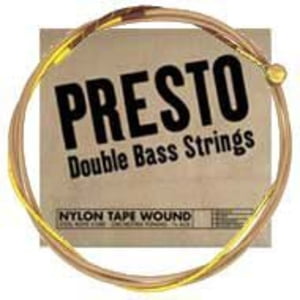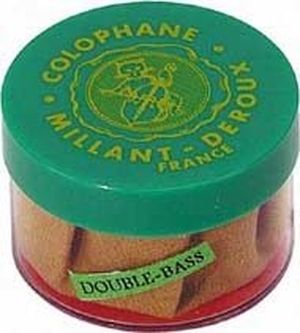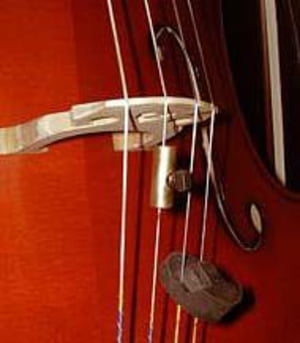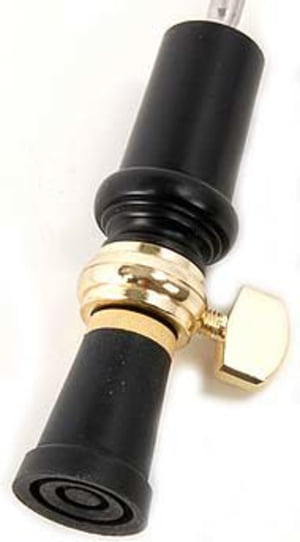11. Accessories
Strings
Most instrument shops stock a considerable range of strings. These days, they are made from a considerable variety of materials, the choice of which is often related to which genre of music the bass player performs most. In the field of jazz, blues and most "non-classical" repertoire, natural gut strings remain very popular, largely because they produce a heavier, more interesting sound when they are plucked. In music that requires the bass to be predominantly bowed, i.e. most classical repertoire, "covered" strings are now much more common. This means strings that have a core - usually steel, gut or a synthetic alternative - which has been wound with aluminium or silver to create a smooth, durable finish. Covered strings, when bowed, produce more volume than natural gut, which is an obvious bonus for a softly spoken instrument like the bass in an orchestral situation. They also last longer, and settle down more quickly when newly fitted, both in terms of tuning and the sound they produce.

Fitting strings is something that should initially be done by a professional, observed by the student in order to learn how it is done. Once you have progressed to doing this at home, never forget that strings are each specific to the pitch they are tuned to (G, D, A, E for a 4-string instrument - the G being the highest in pitch and the E the lowest) and also that they are not interchangeable, so don't get them mixed up! Similarly, each string leads to a specific machine tuner, so it's best to change them one at a time to avoid confusion.
Rosin
Essentially a refined form of the resin produced by coniferous trees, rosin helps the hair of the bow to draw an even sound out of the string by increasing the friction between the two. There are dozens of different makes of varying quality and price, but most come as brittle blocks wrapped in cloth or card packaging. The colour varies from amber to almost black and it is the darker coloured versions, being softer and therefore "stickier", that tend to be better suited to cellos and basses. It's best to handle rosin by the packaging rather than touching the block itself, as its stickiness is by nature rather resistant to washing off with soap and water. In terms of how much to apply, this is a case of "less is more" - if after playing, the belly of the instrument and the stick of the bow resemble a snowy waste, then clearly far too much is being used!
Wolf Note Eliminators
"Wolf notes" are almost inevitable on the lower pitched string instruments and occur when the vibrations of the strings and the vibrations of the instrument on a specific note, or notes, interact with each other to produce a strange buzzing, or "howling" sound, usually on one of the lower strings. The most common solution is to fit a wolf note eliminator, a small brass and rubber tube that fits on the relevant string between the bridge and the tail piece.
Spike Holders
There are quite a few products on the market - all designed to stop the spike slipping and prevent it from damaging floors. They range from simple rubber tips that fit over the point, to much more elaborate pieces of equipment which attach to the legs of the stool, plus a whole host of other designs in between. Most musicians will swear by a particular type, but finding which one suits you is largely a matter of trial and error.
Bass Stool
While bassists may like to stand while playing in solo situations, it is accepted that a stool is required for orchestral work. There are many purpose-designed stools on the market - height adjustment and a foot rest are essential - including some particularly ingenious ones that double as a trolley for transporting the bass around! Try to get the lightest one you can find - you will thank yourself in years to come.






